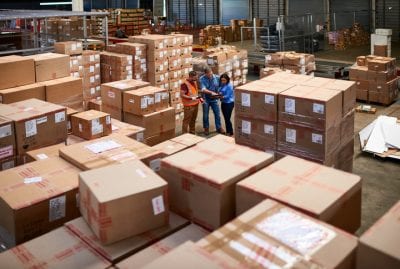
When it comes to moving less-than-truckload shipments from point A to point B, one of the first things to consider is its definition in the trucking industry. In the world of freight shipping, each product definition is its classification. It is important to know how to determine LTL freight class because it affects the final price of your shipment.
The class of freight plays a prominent role in calculating how much the carrier will charge you for transporting it.
How many freight classes are there?
There are 18 different classes LTL freight can ship under: 50, 55, 60, 65, 70, 77.5, 85, 92.5, 100, 110, 125, 150, 175, 200, 250, 300, 400 and 500. The higher the class, the higher the rate for every hundred pounds you ship.
How do you determine LTL freight class?
The many definitions or classes of freight are listed in the National Motor Freight Classification tariff, commonly referred to as the NMFC. The NMFC is a publication for motor carriers containing rules, descriptions, and ratings of all commodities.
There is a publication to classify freight for freight bill rating purposes. Besides defining the classes of shipping commodities, the NMFC also assigns item numbers to each type of commodity. The item number relates not only to the commodity itself, but to its packaging, the material of the commodity, and other considerations.
Item numbers associate with rates as well as commodity classifications. PLS Logistics Services’ LTL department is very familiar with the NMFC classification and can help you determine the proper class of your item.
Which factors affect LTL freight class?
Before a class can be determined, there are some characteristics of the freight that needs to be identified. You need to know how the freight’s density, the stow-ability, how to handle it, and what type of liability it assumes. There are several main factors that determine the LTL freight class, including:
Dimensions
Essentially, dimensions play a large role in estimating the final price of your shipment. Especially, when shipping LTL. Although it goes along with many other factors, length, width, and height are important. It is crucial to provide an exact and correct number since even small discrepancies may result in additional charges.
Weight and Packaging
The next critical measure of your shipment’s cost is the actual weight. Most likely you’ll have to palletize your freight, so the actual weight means the weight including the pallet. Additionally, your shipment’s package will be considered when determining the freight class.
Density and Value
Density guidelines assign classification 50 to freight that weighs 50 pounds per cubic foot. The Commodity Classification Standards Board (CCSB) assigns classifications 70, 92.5, 175 and 400 to freight with densities of 15, 10.5, 5, and 1 pound per cubic foot, respectively. Freight less dense than 1 pound per cubic foot is classified as 500. The density is the space the item occupies in relation to its weight. You calculate density by dividing the weight of the item in pounds by its volume in cubic feet. Your item’s volume in cubic feet is Length x Width x Height/1,728, where all dimensions are measured in inches. The density of your item = Weight/Volume, where Weight is measured in pounds and Volume is measured in cubic feet.
Stow-ability
Most freight stows well in trucks, trains, and boats, but some articles fall under the regulation by the government or carrier policies. Some items don’t fit together. You need special conditions to move hazardous materials. Excessive weight, length or protrusions can make freight impossible to load with other freight. The absence of load-bearing surfaces makes freight impossible to stack. A quantifiable stow-ability classification represents the difficulty in loading and carrying these items.
Handling
Loading freight with mechanical equipment poses no handling difficulties, but some freight, due to weight, shape, fragility or hazardous properties, requires special attention. You have to mention a classification that represents ease or difficulty of loading and carrying the freight and assigns it to the items.
Liability
Liability is the probability of freight theft or damage, or damage to adjacent freight.
Perishable cargo or cargo prone to spontaneous combustion or explosion is classified based on liability and assigned a value per pound, which is a fraction of the carrier’s liability. When the classification is based on liability, density must also be considered.
In conclusion, the class of your freight plays a prominent role in calculating how much the carrier will charge you for transporting it. Knowing the characteristics of freight is very important.
If the product class is inaccurate, you risk paying too much. Also, you violate transportation law which leads to hefty fines if caught trying to pay a cheaper rate.
Looking for easy LTL shipping? Get a free freight quote right now!
Let the Experts Optimize Your LTL
Contact Us Now

